At the core of religious wonder lies the mystery of life and death, and the world contains more understandings of this mystery than we can ever know. When I first stayed with the Sora Indigenous (or Adivasi) people in the highlands of Odisha, eastern India, as a graduate student in the 1970s, they engaged daily in conversations with their dead, who spoke through the mouths of shamans who were in a trance. Surrounded by shouting, drinking, and laughing dancers and musicians, living and dead Sora would gossip, cry and argue together for hours on end.
As a young Englishman clutching my notebook and tape recorder, I’d never imagined anything like it. What were the living and the dead saying to one another? What kind of magician was my new friend Ononti, the shaman with a spirit husband and children in the underworld—her relationship with them so intense that her marriage among the living had collapsed? What manner of skill enabled her to personify those the community had loved, the mourners embracing her stiff, entranced form in their desire to hold people who no longer had bodies of their own? What did she feel as she “became” one dead person after another? And what function did this elaborate ceremony serve?
My long, immersive visits over succeeding decades gradually revealed a worldview of extraordinary complexity, manifested in one of the most elaborate processes of grieving ever documented. The Sora religion I witnessed constituted not only a spiritual tradition but also a sophisticated system of psychotherapy and social regulation that consoled the bereaved, softened generational tensions, and subordinated ideological conflict to debate and compromise. Such Indigenous wisdoms around the world constitute a spiritual gene bank to fall back on as we become increasingly limited to the hegemonic belief systems of the present time.
I learned, too, that Indigenous cultures and spiritual traditions are tightly adapted to local social and historical conditions, which act like specialized ecological niches. This specificity gives them depth but also makes them vulnerable to uprooting and withering—a loss of what I call theodiversity as dramatic and potentially irreversible as any loss of biodiversity.
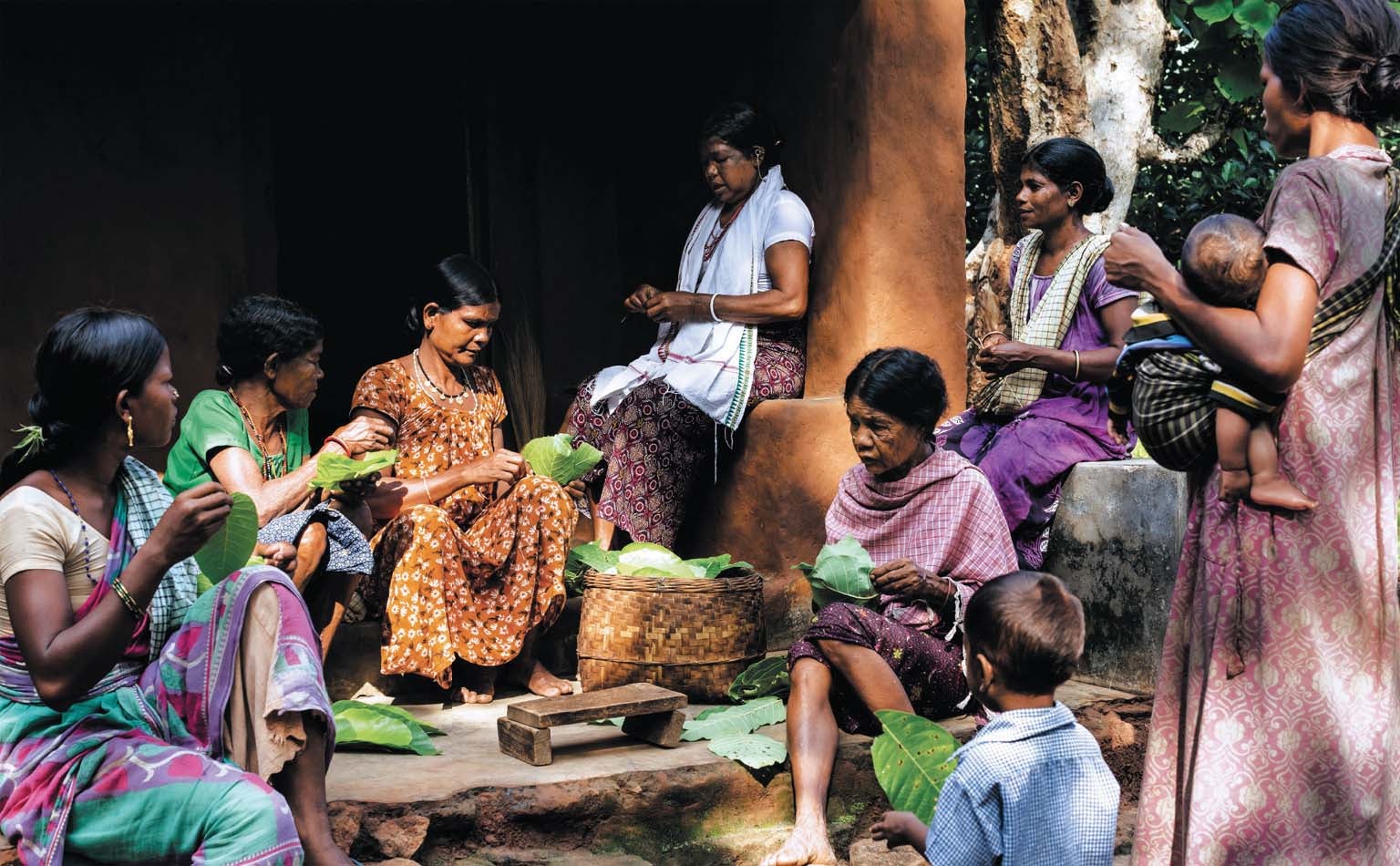
I was so engrossed in decoding the Sora worldview that I initially failed to notice that a new generation of Sora children, the first to attend school and become literate, was turning away from their ancestral religion toward Christian or, in some villages, Hindu sects. Young Sora, educated in a mainstream regional language, expressed contempt for the “backwardness” of their parents and grandparents—a contempt that often extended to me, as a sympathizer with the old religion. Now, almost half a century since I began my research, the traditional funeral rites are largely forgotten. Almost all the Sora who died during the COVID pandemic were given a Christian or Hindu funeral.
Our current age of mass extinction extends to a loss of cultural and religious diversity. These multiple, simultaneous losses are consequences of a monochromatic worldview that favors simple, overarching solutions over complex, multifaceted ones: monocrop plantations, economies based on single commodities, a global financial system, the imposition of majority languages in school and the rise of religious fundamentalisms. These parallels make it more pressing than ever for scholars to explore the diversity of human thinking, much of it among remote minority peoples, which is difficult to access and document, demands specialized research and is still largely unknown. Biology teaches us that diversity of forms in general enables adaptability and survival. The extinction of traditional Sora thought constitutes the loss of yet another species of theodiversity, a major resource for future-proofing a planet racked by contested histories, degraded environments, irresponsible governments and perpetual war.
In the new millennium, I was forced to turn my quest for understanding in an entirely new direction. If the world of the Sora shamans was as fulfilling as I had thought, why were so many younger Sora rejecting it so totally? The Sora, too, are reflecting on this change. Some of them are now asking for my field notes, photographs and tape recordings from the 1970s as heritage documentation of a culture they never experienced themselves, but the after-image of which continues to define their ethnic identity. And in accordance with the last wishes of my elderly Sora friend, Monosi, a Baptist modernizer who died in 2017, I am compiling a dictionary of the Sora language to present to the younger Sora, many of whom speak only Odia, the region’s dominant language.
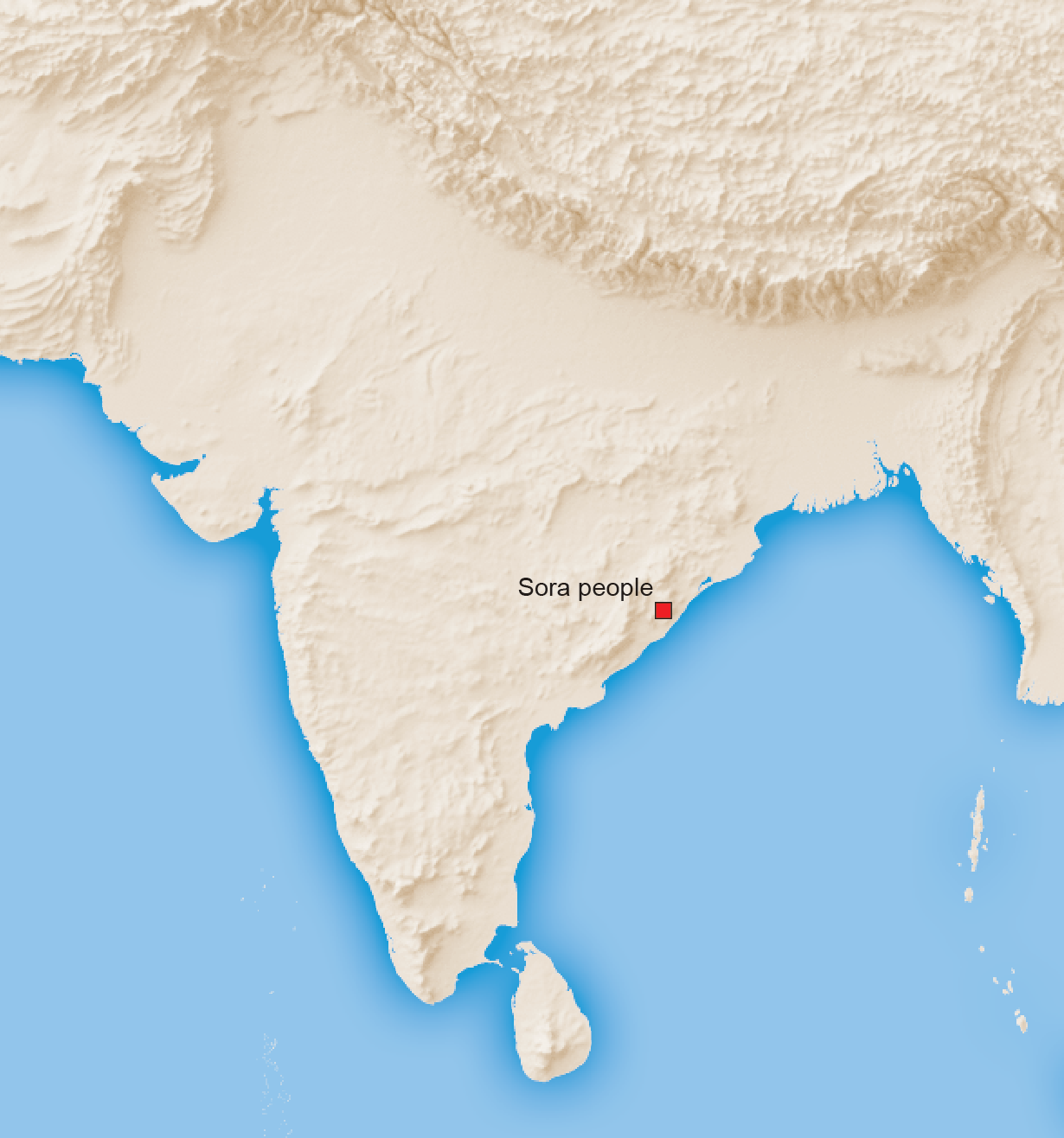
A Conscious World
At school, I studied ancient Greek language and mythology, and I was fascinated by the ancient gods and spirits of the landscape. Living in modern Europe and surrounded by Christian and secular belief systems, I wondered: What would it feel like to live in an animistic world, where features of the environment like trees and rivers are believed to have humanlike consciousness? I could not live with the ancient Greeks, so I retrained as an anthropologist and searched the literature for surviving animistic cultures. I found an account of the Sora from the 1940s. These Adivasi communities lived by shifting cultivation of millets and other subsistence crops, as well as rice cultivation, in forested mountains of eastern India. They numbered some 400,000, spoke a language of the Austroasiatic family—unlike India’s mainstream Indo-European and Dravidian languages—and lay largely outside the Hindu world. In January 1975, after three days’ cycling from the regional capital and a further two days’ walk along precarious mountain paths, I arrived in Rajingtal, a Sora village of about 600 people.
The Sora received me cautiously. Why should they welcome a stranger from a distant land who couldn’t even speak their language? After two weeks I was able to join a band of men in their sessions of drinking the mildly fermented sap of the fishtail palm (Caryota urens). Eventually, after more weeks of testing and teasing, my first Sora friend, Inama, invited me to live with his family. He later gave me a separate house, but concerned that I’d be lonely, he also sent his little boy, Paranto, to keep me company. Paranto was often joined by his friends for a sleepover. The children’s chatter hastened my learning of the Sora language while giving me inside access to village gossip.
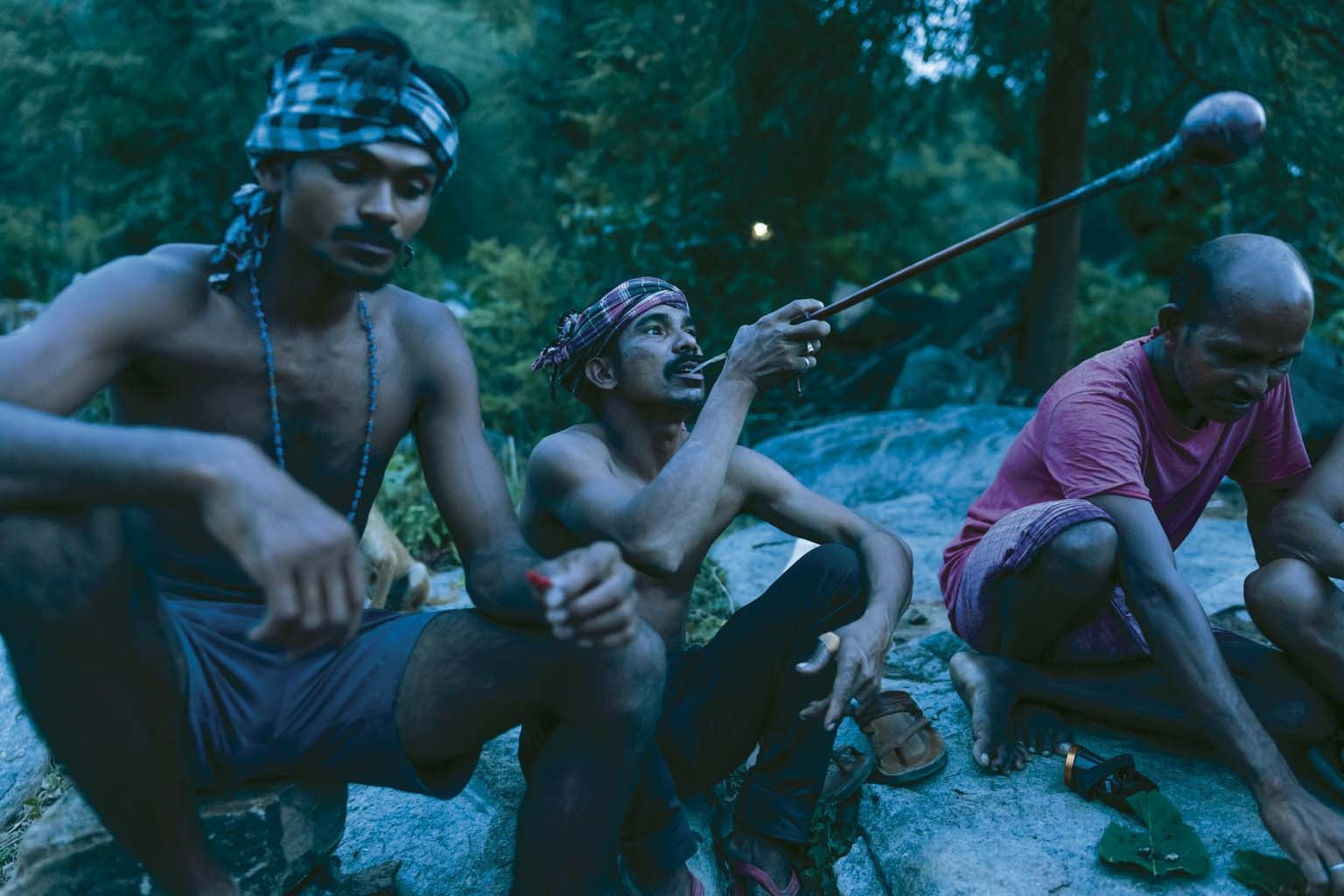
Fieldwork in anthropology is like detective work: tactfully exploratory conversations, the dogged pursuit of clues, connections and patterns, the false starts and wonderful moments of illumination. Rajingtal’s villagers helped me generously with food, water and firewood, and I joined in work parties and squatted among the people surrounding Ononti, observing her trances and her training of her designated successors: the teenage Taranti and the child Lokami. (Most Sora shamans were women, and their training began while they were little girls.) My quest was not just to learn about my Sora hosts but to learn something about the human condition from them.
I later lived in other Sora communities. Each village had several shamans, who specialized in various divinations, healings and funeral rites. Ononti, a small, forceful older woman, was one of the greatest. Sitting on the floor with legs outstretched, she would sing a rhythmic chant invoking her spirit husband and previous shamans—“Clasping hands, grandmothers, along the impossible tightrope path”—then enter a trance state as her soul descended to the underworld. This left her body “vacant” for 10 or 20 dead villagers to come up in succession to speak, each swigging palm wine through her mouth, discussing their family affairs and reproducing their own distinctive speech habits. I tried various tricks to test the extent to which shamans were consciously guiding these conversations, but they always remained in character. Despite decades of study, I never really understood the state of mind involved in a Sora shaman’s trance—with its dreamlike nature, its blend of beauty and terror in the underworld, and the theatrical aspect of assuming one identity after another.
How could a people care so much about what happens to those they love after death? I wondered. And what induced them to come up with this particular solution to the problem of death—the concern of all religions? I came to realize that what my Sora friends feared most about death was not annihilation but separation from loved ones. In their view, a person who died didn’t simply vanish but continued to exist and to feel—though not in any of the ways I’d ever thought about. The grief of this separation was felt equally keenly by both the living and the dead. So intense was this mutual attachment that the dead passed on the symptoms from which they themselves had suffered, bringing the living as close to them as they could. Indeed, for Sora, the only possible cause of illness and death was other dead people, in a literal interpretation of the consuming power of memory and grief. Physical and emotional pain were not separate—each illness was a reminder of your attachment to someone close to you who was now pulling you toward them by eating your soul.
And yet the living wanted to stay alive. The response to an illness was to give the dead the soul of a sacrificial animal as a substitute for your own and to engage the dead in conversation as they used the shaman’s voice to explain their feelings in graphic detail. Here is Amboni, a young girl who died days earlier of leprosy, addressing, through the mouth of a shaman, her living mother, Rungkudi, and aunt, Sindi, in terms that surely aimed to give expression to their own feelings of guilt:
Amboni (arriving from the underworld, faintly): Mummy, where are my gold nose rings?
Sindi: They must have burned up in the pyre, darling. We looked but couldn’t find them.
Amboni (petulantly): Why don’t you show me my nose rings?
Sindi: They were so tiny. If I’d found them, of course I’d show them to you. Oh, my love, my darling, don’t cause your own illness in others. Can you say that your mother and father didn’t do enough sacrifices for you? They didn’t turn their backs or refuse to help you, did they?…
Amboni (addressing her silently weeping mother): Mummy, you were horrid to me, you scolded me, you called me Scar-Girl, you called me Leper-Girl. You said, “You’re a big girl now, why should I feed you when you sit around doing nothing?”
Sindi: She didn’t mean it; she couldn’t help saying it. You were growing up, and there were such a lot of chores to do.
Amboni (sulkily): I want my necklaces. Why can’t I have my nose rings? I have to go digging, shoveling and leveling fields in the underworld, all without my nose rings. I came out in scars all over; my fingers started dropping off. That illness was passed on to me, that’s how I got ill.
Sindi: But don’t you pass it on. Don’t give it to your mother and little sisters!
Amboni: If I grab them, I grab them. If I touch them, I touch them. If I pass it on, I pass it on: that’s how it goes.
Sindi: Your cough, your choking, your scars, your wounds, don’t pass them on!
Amboni (calling back as she returns to the underworld): My Mummy doesn’t care enough about me!
In the first sessions after someone died, the dead person’s feeling of victimhood prevailed, making them not only pitiable but also aggressive and dangerous. Over several years the living mourners persuaded the deceased into a less aggrieved state of mind. At successive stages of the funeral, the shaman’s male assistants would sing and dance in the persona of the ancestors to “redeem” the newly dead person from the particular symptoms of their death and lead them into the company of their ancestors in the underworld.
Dialogues allowed the living and the dead to explore their shared life and now their separation and to heal each other’s loss and resentments in a mutual bereavement therapy. This ancient recognition of the ambivalent feelings in any close relationship finds a striking echo in Sigmund’s Freud’s theory of bereavement, where a mourner may suffer from the same emotional condition as the deceased. But there is a crucial difference. Freud’s psychological theory is individualistic: the memory of the dead person exists only in the mourner’s mind. In contrast, the Sora conceived their dead as existing autonomously and reaching out to the living in a drama where relationships and feelings were not shut away in people’s psyches but were performed in public for all to hear, see and debate. Death was not a lonely event; it was a shared condition.
In this highly social worldview, people are understood not so much as individuals as through their involvement with others. What we call the environment, too, is a socialized concept. The world was created in a mythic time by various local deities. Although the dead reside in an underworld, they are also distributed across the nearby landscape, where they infuse their soul force into the crops of their descendants, reciprocating and recycling the vitality of the animal blood sacrificed to them by the living. This is not an exploitation of the earth, not even an ecologist’s idea of stewardship; it is a cycle of total mutual nourishment and dependency. In this view, there is no impersonal “nature.” Rather the very notion of environment is fully humanized through the dynamics of the memory traces that humans leave behind to be processed by shamans.
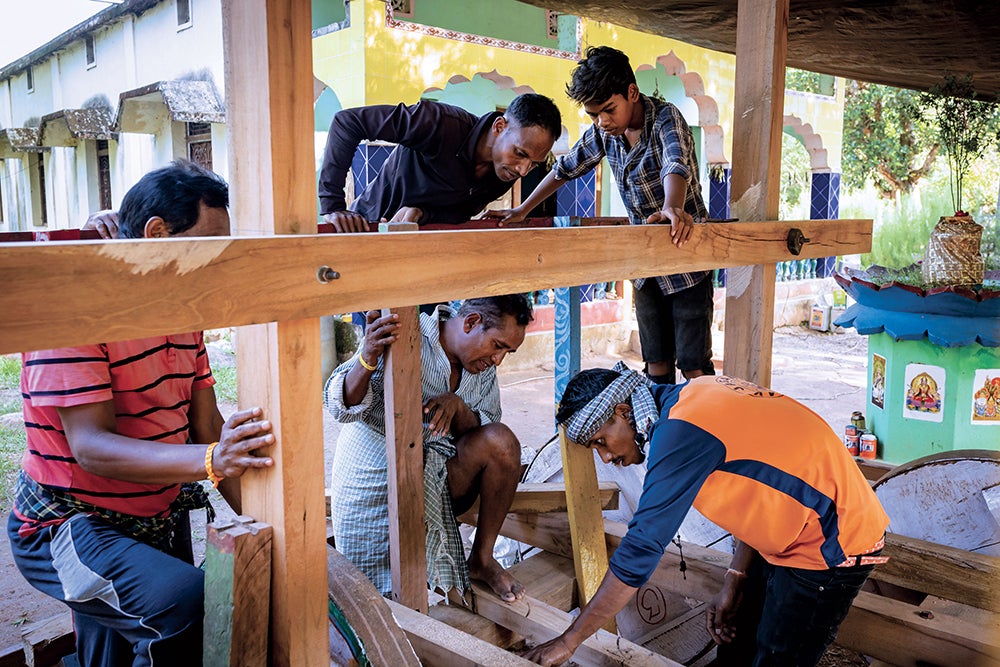
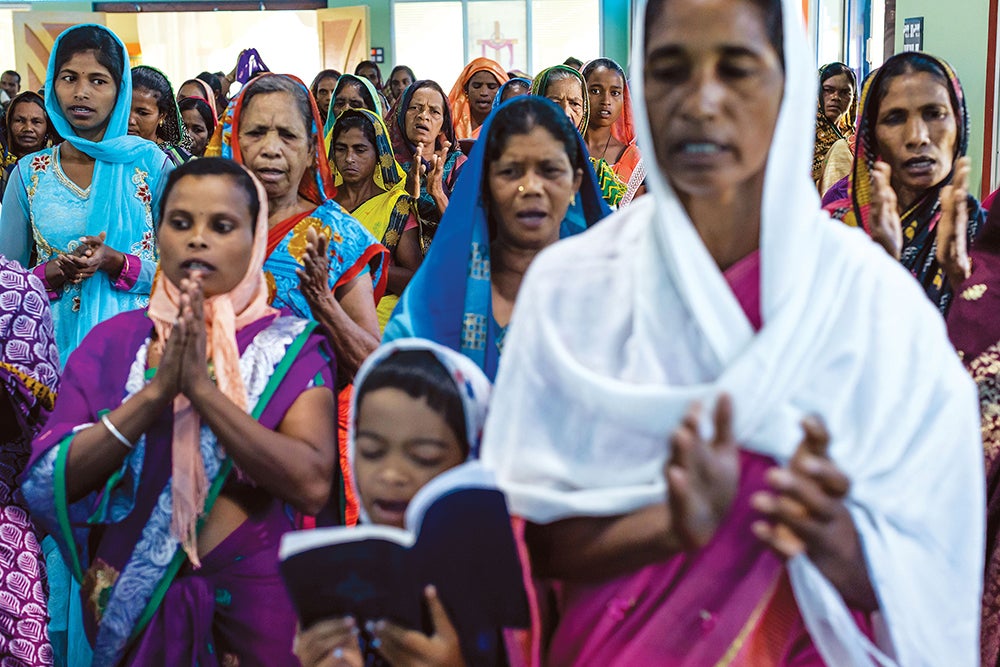
I also saw how the underworld reflected and inverted the power hierarchy in this world. My Sora friends were living at the tail end of a feudal regime that placed them in unremitting poverty and humiliation. Unable to read or to speak Odia, the Sora were forced to communicate with Odia-speaking police and other officials through a special caste of interpreters. Sora had no idea what was being said on their behalf or what officials were replying, and they were easy prey for systemic extortion, intimidation and fraud.
It turned out that the Sora shamans’ spirit husbands, who enabled their entire technique of entering a trance, were themselves non-Adivasi police and government officers in the underworld! They were fantasy counterparts of the very people who oppressed the Sora aboveground, but within this fantasy they were domesticated by the shamans through marriage. The shamans’ spirit husbands could speak Odia as they “wrote down” the names of the ancestors of the shamans’ clients. They commanded the mysterious and powerful technique of writing but used it not to persecute the Sora but to open a channel to their ancestors.
Two years after my first encounter with Ononti, and by then living in a neighboring village, Sogad, I became one of these funeral assistants singing the songs that supported the shamans’ trances. By now I had learned to transcribe and translate dialogues between the living and dead and noticed an evolution in their emotional tone. These dialogues were a method for crafting the disordered and distressing fading of memory into a structured and healthy forgetting. Conversations with people who had died recently were full of intense anguish, of love and longing mixed with guilt, as the dead accused the living of neglect while the living defended themselves. As the tone became more relaxed over the years, the grief diminished on both sides and the dead person became less likely to be diagnosed as the cause of illness or death. Eventually, as they evolved from predator into protector, the dead gave their personal name back to a baby among their living relatives.
And finally, as I worked out by tracing genealogies, when nobody was left alive to remember them, the dead person turned into a butterfly, a memory without a rememberer. This was the true end of the person, the final resolution of their suffering and that of those attached to them.
Global Religions
My youthful research was completed by the 1980s and encapsulated in my first book on the Sora, but I continued to visit my friends. The shamanic tradition was fading as mainstream religions advanced. But what I saw as loss, young Sora were seeing as liberation. Canadian Baptist missionaries had been offering Christianity to the local populace for decades, moving up from an original base in the plains to one on the other side of the Sora hills from Rajingtal and Sogad. The foreign missionaries left under government pressure in the 1970s, but their vigorous core of Sora converts continued to advance their religion into the remotest uphill villages. The church adapted the Roman alphabet to introduce literacy in the Sora language, and in the 1980s a flood of government schools, roads, employment and development cash introduced speaking and writing in Odia, too. Between them, church and school completely undid the Sora’s previous exploitation and created a more confident and prosperous new generation.
The great shaman Ononti gave up trancing in the early 1990s, heartbroken by the death of Maianti, a dear friend and colleague, and shocked by the disrespect of some Sora youths, who had torn off her gold necklace. She died in 2005.
One chilly December night a few months after Ononti’s death, five women shamans, including Ononti’s former pupils Lokami and Taranti, sat side by side and started to enter a trance, their souls descending into the underworld to meet their spirit husbands and children, and to bring up a succession of ancestors to talk with their descendants and mourners. The spirit of Ononti came back to greet me through Lokami’s mouth and joke about our adventures together. But suddenly, Taranti fell out of her trance—something I’d never seen before—and started weeping, “Why can’t I do it? I was terrified on the path, I came back, I woke up. Will I never see my family in the underworld again?”
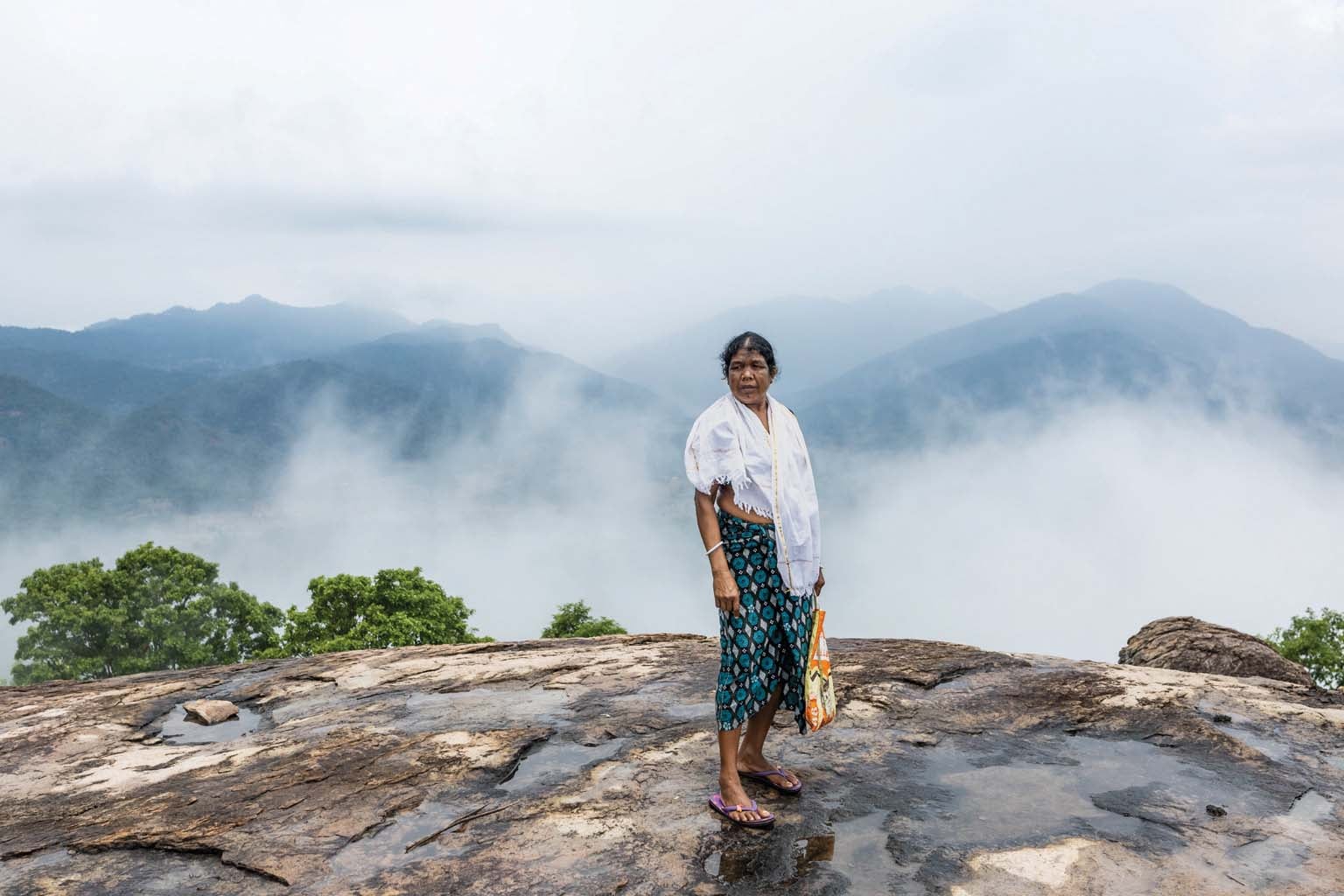
I knew Taranti’s children in the world of the living. They had become officials in the Baptist Church, and her profession—witchcraft, to Baptist eyes—was damaging their chances of promotion. Now, under the pressure of their repeated shaming, she’d lost her confidence. I felt for my friend’s anguish and wondered all the more about the reason for young people’s conversion. As a social scientist, I couldn’t simply accept the Christians’ own explanation: because they are right. I had to find a social interpretation.
All religions acknowledge suffering as an inherent and unavoidable part of the human condition, and all offer some form of hope and liberation. But a new religion also changes one’s fundamental understanding of the universe. The underworld of the dead was now counterbalanced by a new idea of heaven. “I don’t know if I’ll go to the sky or the underworld when I die,” one old man told me. “But I prefer the underworld—the company’s better there!”
To my understanding, the deepest change was in the relationship between living and dead. For Sora Baptists, death comes about through the “will of God”—a motivation they still find hard to explain. Lengthy shamanic dialogues, which reinforced attachment to the dead, are now replaced by a brief, final funeral and an attachment of a new kind, to a new and distant deity and his son Jesus.
Whereas prolonged interaction with the dead brought animists solace, Sora Baptists feel better by severing all contact. “Remembering makes you ill,” a young Christian told me simply. Indeed, local Baptist ideology aims for complete rupture not only with the dead but also with the old religion, which, the Sora pastors insist, must be abandoned entirely. And although younger people feel liberated as they become literate in both Sora and Odia and give up subsistence agriculture and “primitive” customs to join the mainstream competition for jobs, older Sora with the traditional worldview have a new reason to fear death: “You’ve seen how I talk to my dead parents, but after I die, will my children talk to me?”
One can be caught between these worldviews. My old friend Inama died around 1992. His son Paranto, now an adult and Baptist convert, gave him a minimalist Christian funeral. But Paranto had started life as an animist and now had difficulty finding a way to mourn his dead father. “I met my father in a dream,” he told me several years later. “It was as if we were meeting in waking life:
‘You’ve died—where have you come from?’ I asked.
‘I’m not dead,’ my father said. ‘I remain, I exist.’
“I got up and looked around: it was the middle of the night—there was nobody there! I cried. I was very sad.”
‘I thought you were dead!’ I said. I met him on the way to his favorite drinking place. ‘Ai! Where are you going?’
‘I’m just wandering around.’ He looked just as he had when he was healthy.
‘But how come your body was so sick, and now you’re healthy again?’
‘It’s all right. I’m fine now.’
“I looked around; there was nobody. He didn’t harm me. We just talked and cried together.”
Through this dream, Paranto received a reassurance about his father’s well-being that the old religion had offered but Christianity cannot give. He was forbidden to speak with his dead father through a shaman, but the dream subverted this prohibition by re-creating an entire dialogue between them.
Even fervent converts can find themselves conflicted. My friend Monosi had become one of the very first Sora Baptists in the 1940s. He traveled throughout India on church business and helped with Bible translation. In the mid-1970s I hesitated to approach him because I assumed he would disapprove of my interests. But one day in 1977 I asked him to help me understand a tape of chants by Ononti’s young apprentice Taranti. Monosi became enchanted with an exquisite incantation she’d sung while in trance in the persona of a peacock spirit, naming each place as it flew across the landscape. This epiphany changed Monosi’s life. He begged me to bring him more tapes and started accompanying me to rituals, his eyes opened to a world he had once rejected—thereby earning severe disapproval from the Sora Baptist pastors.
Over 30 years later, in a mood of partial regret, Monosi collaborated with me in 2011 to compile shamanic texts and archival photos, to document the culture he had done so much to change. Now avidly read by young Sora, this book about their own ancestral history is the main book available in Sora apart from the Bible.
If, as these encounters suggested, Christianity did not offer a more comforting view of life, death and suffering, what did it offer that was so attractive to the younger Sora? One clue was that Sora in some other areas were also converting—but to orthodox strands of Hinduism, influenced by Hindu missionaries who claim that India’s Adivasis are really Hindus who lost contact with proper Hinduism in the jungle. These missionaries don’t reject Adivasi religions but seek to clean them up by abolishing “bad” habits such as animal sacrifice. But even though Christianity seeks rupture and Hinduism seeks reform, sociologically they are functional equivalents: both offer a similar pathway for coming out of isolation and reinforce the impact of schools, roads and jobs by drawing the Sora more directly into the Indian mainstream.
These new religions are more appropriate to the new circumstances in which younger Sora find themselves. As they abandon jungle slopes with their subsistence crops, newly literate Sora are streaming downhill to integrate into the Indian nation-state and the wider global world. The geographies of Christianity and Hinduism are not oriented to features of the local environment but to biblical Israel, where no Sora has ever been, or the sacred sites of Hindu nationalism. In abandoning their ancestors and turning to Jesus or Krishna, young Sora are not so much converting to new religious forms but rather away from their previous isolation and poverty.
History recounts many instances of conversion from local to world religions. In Europe, this transition from “paganism” took many centuries and has never been fully completed. My life with the Sora has shown me the dislocation and pain that these streamlined accounts mask. At the same time as young Sora are achieving political and economic emancipation, they pay a high psychological price as they lose intimate bonds with their ancestors and environment. Taranti’s sundering from her beloved spirit family and Paranto’s inability to speak to his dead father in waking life are just single moments of personal drama in a vast historical shift.
It is true that the Sora are now less exploited and impoverished than before. But they are also more likely to be drawn into the culture wars grounded in depersonalized, delocalized ideologies that are ripping the world apart, in India as much as in Euro-America. Taranti’s tears at her lost world, Monosi’s theological agonizing, and Paranto’s comforting dream should concern us all.
Editor’s Note (12/22/22): This article was edited after posting to correct the descriptions of when Lokami and mourners stitched leaves from a sacred Sal tree into bowls and where Sora men drank palm wine.
